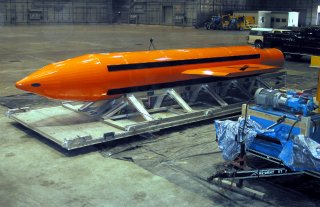Investigation Finds Pentagon’s Air War Used Bad Information
The investigation cited dozens of cases of airstrikes that resulted in civilian casualties.
The Defense Department’s air wars in the Middle East have been characterized by “deeply flawed intelligence” and “faulty targeting,” leading to the deaths of more than one thousand civilians since 2011, according to an investigation published by the New York Times on Saturday.
The report, based on documents detailing thirteen hundred cases of reported civilian casualties obtained via Freedom of Information Act (FOIA) requests, contradicts rosy assessments by Defense Department officials claiming that bombings were precision-guided and based on solid intelligence gathering. Although military officials repeatedly promised transparency and accountability in the program, the New York Times investigation argued that they had fallen short, pointing out that no military personnel had been subjected to disciplinary action or accused of wrongdoing because of faulty intelligence estimates.
To support its case, the investigation cited dozens of cases of airstrikes that resulted in civilian casualties. Some were reported for the first time. Others had been previously acknowledged but included estimates that downplayed civilian casualties, according to the New York Times. It mentioned, for example, an airstrike in the Syrian village of Tokhar, which was initially said to have killed eighty-five ISIS fighters but was later revealed instead to have killed more than one hundred civilians.
The report’s release comes after the Defense Department indicated that no military personnel would be subject to discipline for intelligence errors leading to the mistaken killing of ten civilians in an airstrike in Kabul, Afghanistan in August.
That airstrike, which took place during the chaotic U.S. withdrawal, was initially said to have killed a group of Islamic State-Khorasan Province (ISIS-K) terrorists attempting to attack the Kabul airport. A successful attack by the group against the airport killed a dozen U.S. personnel and more than one hundred Afghans, leading the Biden administration to promise retaliation.
When asked for U.S. Central Command’s input, Captain Bill Urban, the organization’s spokesman, claimed that “even with the best technology in the world, mistakes do happen, whether based on incomplete information or misinterpretation of the information available. […] We work diligently to avoid such harm. We investigate each credible instance. And we regret each loss of innocent life.”
The report showed that airstrikes dramatically increased during the second term of President Barack Obama, who presided over a surge, then troop reduction in Afghanistan, as well as the initial U.S. withdrawal from Iraq—although the president was forced to return troops there three years later to contain the rise of ISIS. Owing to these developments, public enthusiasm for continued “boots on the ground” in both countries sharply waned, leading Obama and his successor, President Donald Trump, to increasingly utilize unmanned aircraft for counterterrorism missions.
The investigation is the first installment in a two-part series.
Trevor Filseth is a current and foreign affairs writer for the National Interest.
Image: Reuters

